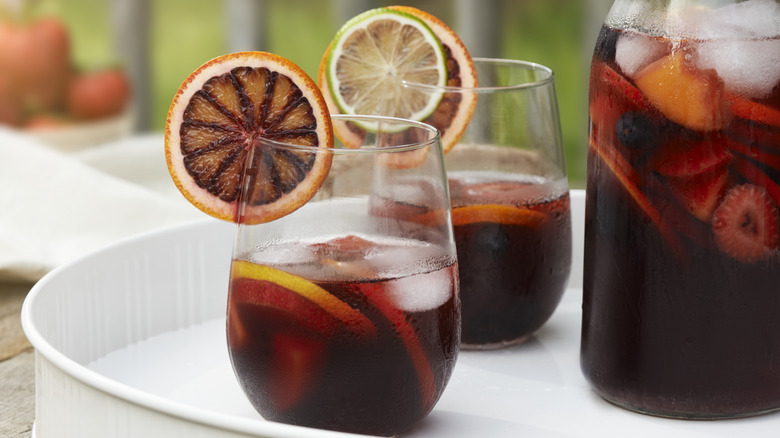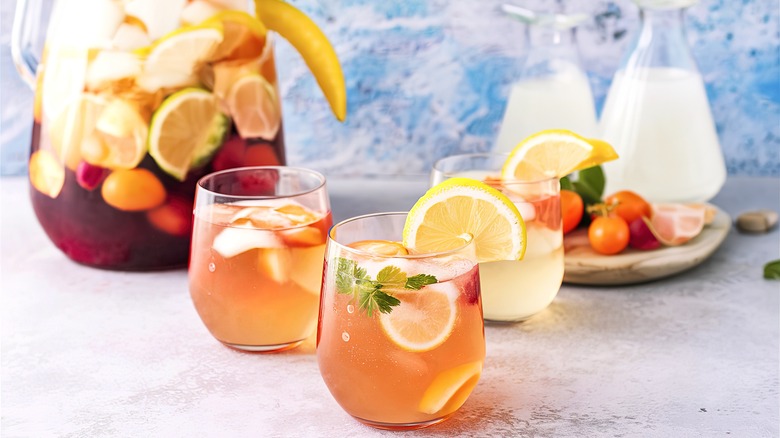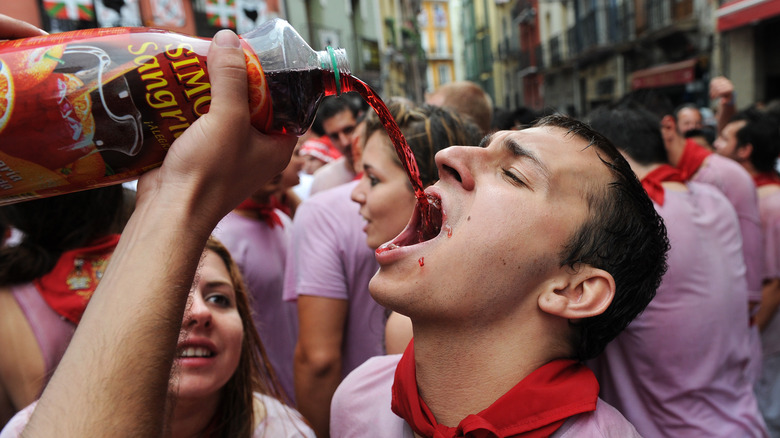The Truly Ancient Origins Of Sangria
Sangria is a simple but delicious punch typically made from red wine and chunks of the freshest fruit. You'd think something so straightforward would have little history worth discussing. However, sangria's origins are so ancient, we have to begin further back than its first creation.
In the ancient world, wine was often diluted with water, mostly to make the water safe to drink. However, this mixture was understandably light on flavor. Other ingredients, usually spices such as nutmeg and clove, were added to improve it. These mixtures were called "hippocras" after Hippocrates, who believed that spicing wine was good for your health.
Spicing, and often heating, wine this way would morph throughout the middle ages into the wintertime classic mulled wine. But the idea of mixing ingredients spread, including to the people of what is now modern-day Spain, in the Rioja wine region. When the people there started mixing citrus fruits with their wine, "sangria," meaning "bloodletting" or "bleeding" after the drink's color, was born.
Sangria in 'recent' history
Sangria continued to be enjoyed in the Rioja region until 711 A.D., when an invading force of Berbers swept in, taking control of the land. They followed the Muslim faith, so sangria and other alcohol were prohibited. This prohibition continued until 1492, when the kingdoms of Aragon and Castile would complete their conquest of the region, returning alcohol to legality.
As the world turned and slowly became more interconnected, sangria spread and different recipes came into being. France, wine capital of the world, especially experimented with sangrias made from various wines. Besides using French reds such as Bordeaux or cabernet instead of Spanish reds from Rioja, white wines started being used for a lighter, crisper drink. Or, as a bubbly treat, sparkling wines such as Champagne.
Some sangria recipes became popular enough to get their own names, such as Zurracapote. It's often shortened to zurra or just called "peach sangria" since it uses peaches or nectarines as its key fruit. There are also plenty of sangria-inspired mocktails.
Sangria in the modern world
Sangria remains a popular drink in Europe, especially in Spain where the drink is a key part of festivals, including the opening ceremony for the legendary San Fermin Festival. However, it didn't catch on in the United States until the 1964 World's Fair. It was there, at Spain's pavilion, that fair goers got their best taste of sangria before bringing the memory, and recipe, back with them across the country. Fun fact: "Bel-gem," later "Belgium," waffles also debuted at the '64 World's Fair.
With this explosion of sangria appreciation came more than one business selling drinks labeled as "sangria" without being a true sangria. To protect both the drink and Spain's historical ties to it, the European Union set strict rules as to what constitutes true sangria in 2014. Some of the most interesting of these rules are that sangria must contain a citrus fruit and that only sangria made in Spain and Portugal can be called sangria. Drinks from other countries that otherwise hold to the sangria rules can only be sold as sangria so long as the origin is part of the product name, i.e. "French sangria."


